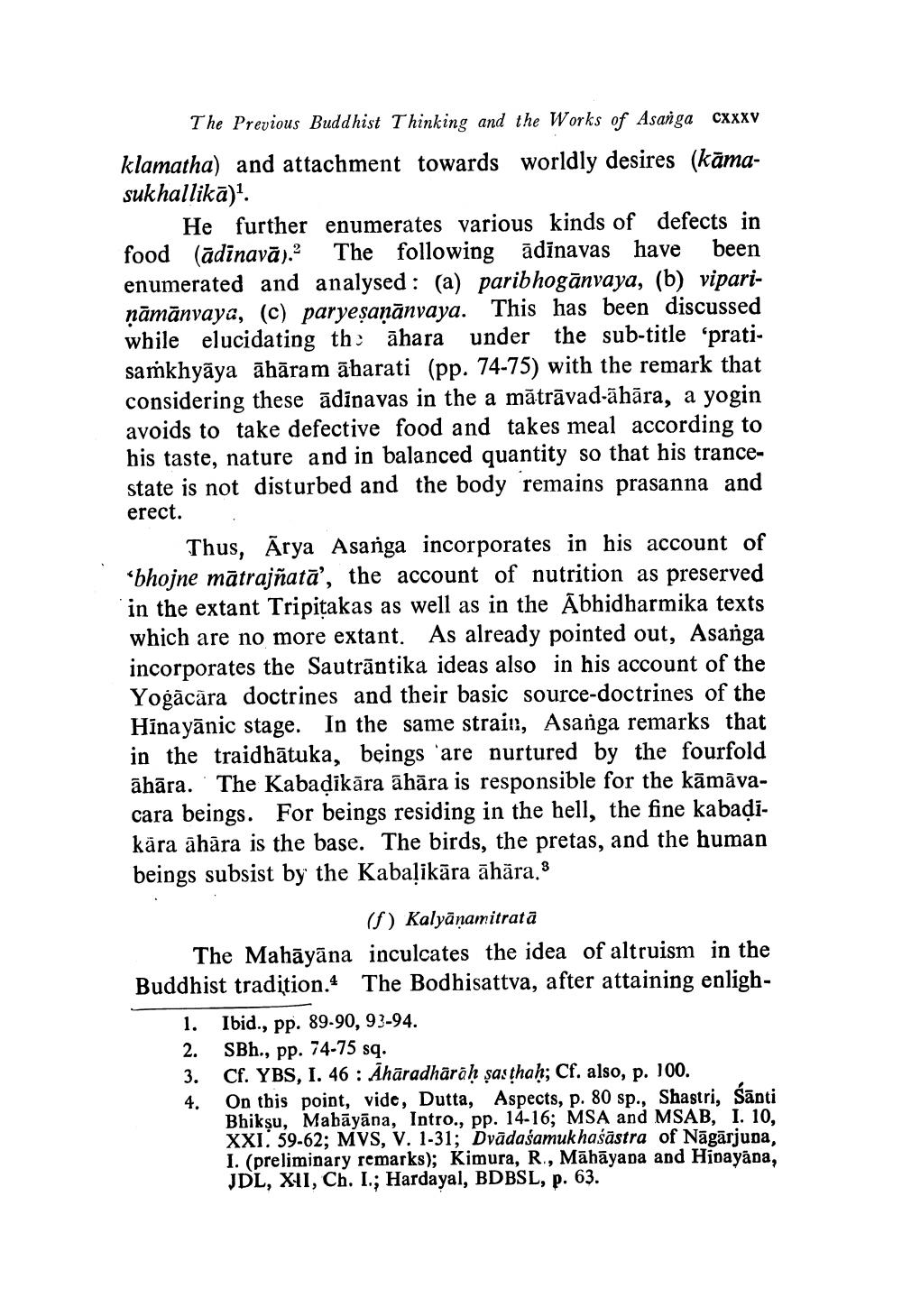________________
The Previous Buddhist Thinking and the Works of Asanga cxxxv klamatha) and attachment towards worldly desires (kāmasukhallikā).
He further enumerates various kinds of defects in food (ādinavā). The following ādīnavas have been enumerated and analysed: (a) paribhogānvaya, (b) vipariņāmānvaya, (c) paryeșaņānvaya. This has been discussed while elucidating the āhara under the sub-title 'pratisamkhyāya āhāram ābarati (pp. 74-75) with the remark that considering these ādinavas in the a mātrāvadāhāra, a yogin avoids to take defective food and takes meal according to his taste, nature and in balanced quantity so that his trancestate is not disturbed and the body remains prasanna and erect.
Thus, Ārya Asanga incorporates in his account of bhojne mātrajñatā', the account of nutrition as preserved in the extant Tripitakas as well as in the Abhidharmika texts which are no more extant. As already pointed out, Asanga incorporates the Sautrāntika ideas also in his account of the Yogācāra doctrines and their basic source-doctrines of the Hīnayānic stage. In the same strain, Asanga remarks that in the traidhātuka, beings are nurtured by the fourfold āhāra. The Kabadikāra āhāra is responsible for the kāmāvacara beings. For beings residing in the hell, the fine kabadikāra āhāra is the base. The birds, the pretas, and the human beings subsist by the Kabaļikāra āhāra. 3
(f) Kalyānamitrata The Mahāyāna inculcates the idea of altruism in the Buddhist tradition. The Bodhisattva, after attaining enligh1. Ibid., pp. 89.90, 93-94.
SBh., pp. 74-75 sq. Cf. YBS, I. 46 : Ahāradhārah şasthan; Cf. also, p. 100. On this point, vide, Dutta, Aspects, p. 80 sp., Shastri, śānti Bhikṣu, Mabāyāna, Intro., pp. 14-16; MSA and MSAB, 1. 10, XXI. 59-62; MVS, V. 1-31; Dvādaśamukhaśāstra of Nāgārjuna, I. (preliminary remarks); Kimura, R., Māhāyana and Hinayana, JDL, XII, Ch. I.; Hardayal, BDBSL, p. 63.
2.




